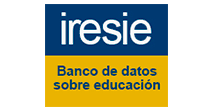OS PARÂMETROS CURRICULARES NACIONAIS DO ENSINO MÉDIO: A PREPARAÇÃO PARA O MUNDO DO TRABALHO PRECÁRIO
DOI:
https://doi.org/10.5216/ia.v38i2.26135Keywords:
Parâmetros Curriculares Nacionais do Ensino Médio, Trabalho. Cidadania, Reestruturação Produtiva, Precarização do TrabalhoAbstract
O objetivo deste artigo é apresentar de que forma a categoria trabalho é abordada nos Parâmetros Curriculares Nacionais do Ensino Médio (PCNEM), afinal, esta categoria é considerada o eixo principal para a formulação da reforma curricular deste nível de ensino. Neste documento, há dois eixos centrais, o trabalho e a cidadania, porém, a cidadania é agregada e subordinada às novas exigências do mundo de trabalho, que de acordo com o documento, foi constituído após a década de 1970. Segundo os autores dos PCN do ensino médio, a sociedade contemporânea sofreu duas grandes transformações nos anos 70: a revolução tecnológica e do conhecimento, as quais deram origem às novas exigências do processo produtivo, do mercado de trabalho e das relações sociais. A partir destas justificativas do MEC para a reforma do ensino médio brasileiro, nosso objetivo neste artigo é verificar de que forma a categoria trabalho é conceituada no documento, como a organização curricular do ensino médio se adaptou às novas tendências e quais são essas novas exigências do mundo do trabalho que o documento pretende se adaptar. Para essa análise, utilizamos as categorias: trabalho, trabalho estranhado e a precarização do trabalho.Downloads
Downloads
Published
How to Cite
Issue
Section
License
Inter-Ação uses the Creative Commons Attribution 4.0 License for Open Access Journals (Open Archives Initiative - OAI) as the basis for the transfer of rights. Open access means making documents available on the Internet free of charge, so that users can read, download, copy, distribute, print, search, or link to the full text of documents, process them for indexing, use them as input data for software programs, or use them for any other lawful purpose, without financial, legal, or technical barriers.
Authors publishing in this journal agree to the following conditions:
1) Authors retain copyright and grant the journal the right of first publication, with the work simultaneously licensed under the Creative Commons Attribution License, which permits redistribution of the work with attribution and first publication in this journal.
2) Authors are permitted to enter into additional, separate agreements for non-exclusive distribution of the version of the work published in this journal (e.g., for publication in an institutional repository or as a book chapter), with attribution and first publication in this journal.
3) Authors are permitted and encouraged to publish and distribute their work online (e.g. in institutional repositories or on their home page) at any time before or during the editorial process, as this may generate productive changes as well as increase the impact and citation of the published work.















